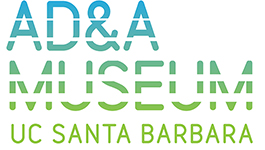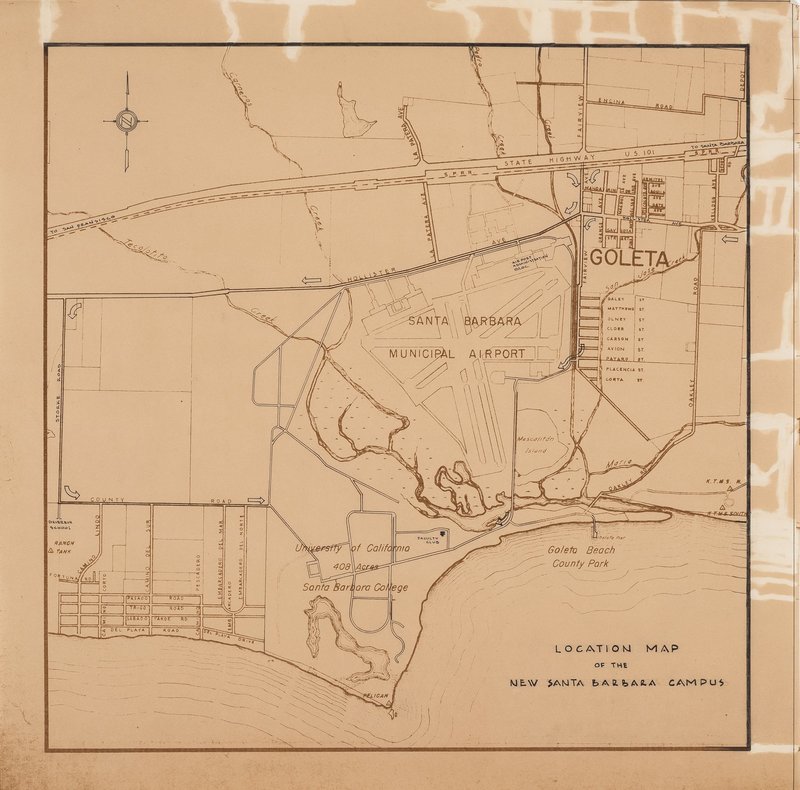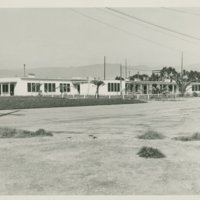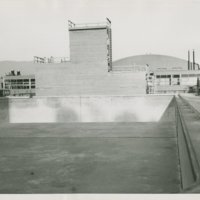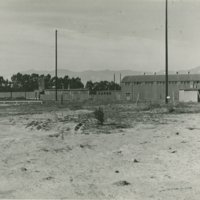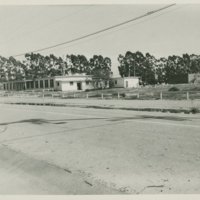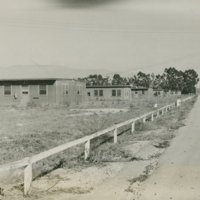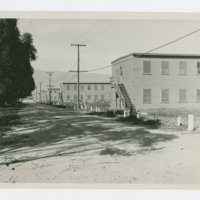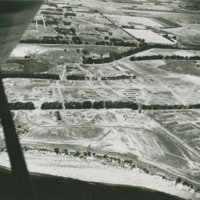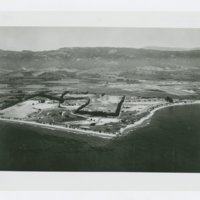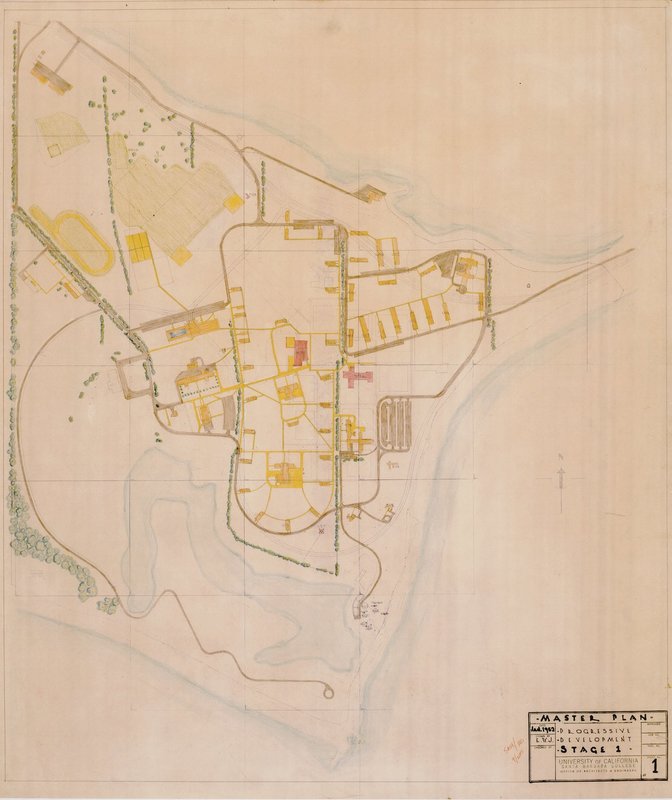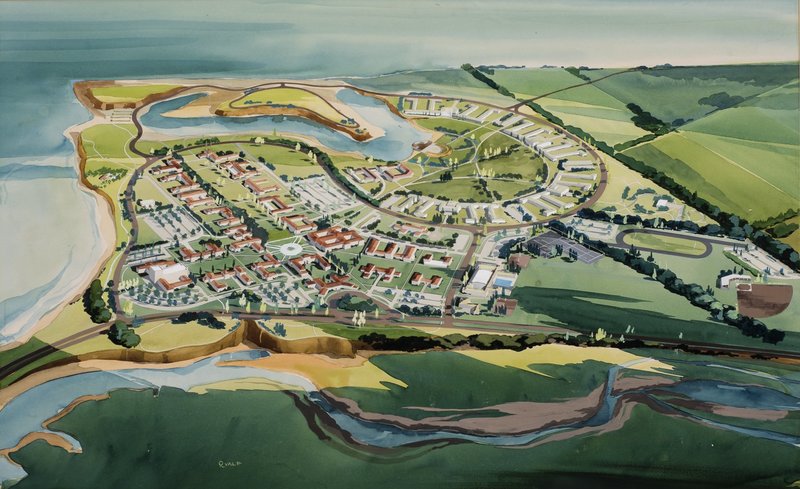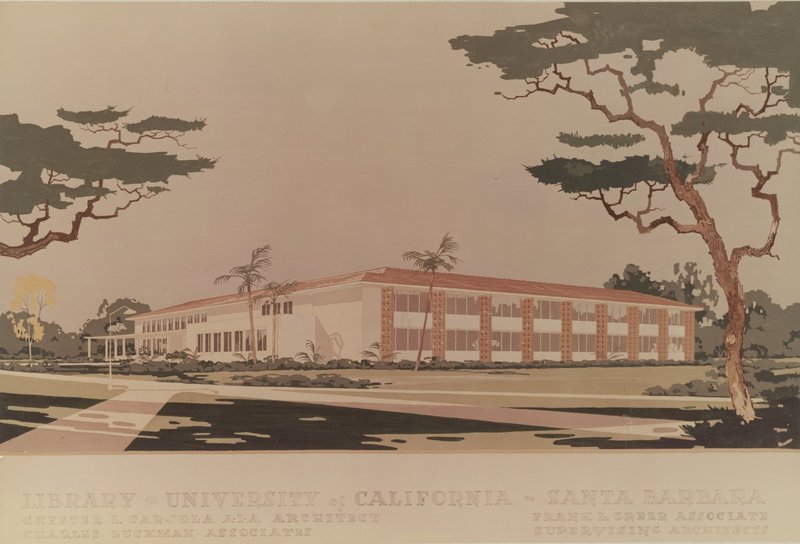World War II and the Goleta Mesa Campus
World War II Marine Air Base
In 1944, local leaders and politicians petitioned the University of California regents for a new UC location in Santa Barbara. The name was changed to the Santa Barbara College of the University of California, and in 1948 land that had formerly been a Marine Air Base in World War II was obtained through the War Assets Board to house the new campus. The 408 acre parcel of land on a mesa overlooking the Pacific Ocean on two sides already had buildings (barracks, mess hall, officer’s quarters, etc.), a road system, and eucalyptus trees that were planted prior to the Marine’s taking over. The Marines had also installed a water and sewer system that received water from Goleta; this was very important since the Goleta Mesa/Isla Vista area did not have any suitable sources of groundwater. In fact, Isla Vista was not hooked up to any water supply until Cachuma Dam was built in the early 1950s.
Many of the buildings which were part of the Marine Air Base were re-purposed as classrooms, dormitories, cafeteria, and office space. The base hospital became the student health center (until the current building was built in 1968), the Marine recreation center became the Student Union, and an auditorium on the base was used for concerts and large lectures until Campbell Hall was built in 1961. The Marine training pool is still in use today as the UCSB water polo facility, and the Old Gym (also known as the Red Barn) is used as overflow office space.
The wind-swept and remote nature of the campus was a concern to early planners. The adjacency to the local airport also brought noise concerns. The long rows of eucalyptus that had been planted by early ranchers provided some relief from the westerly winds, but since much of the top soil on the mesa had been removed by the navy to fill in the slough for the airport, blowing sand was still quite a problem.
Santa Barbara College of the University of California
In 1950, the architecture firm Soule and Murphy was retained to develop a master plan for the campus. The Soule and Murphy master plan shows a large semi-circle of buildings facing the lagoon, with another wide plaza surrounded by buildings also facing south, with recreational fields on the northern end of the mesa overlooking the airport. They believed that the oceanfront site was an important factor in situating the campus buildings. This plan was designed to house a small liberal arts college with a maximum enrollment of 3500 students. After designing and building the first science building (now named Webb Hall), Soule and Murphy worked with Chester Carjola to design the first Library building to fit within their 1950 master plan.
